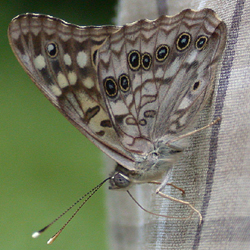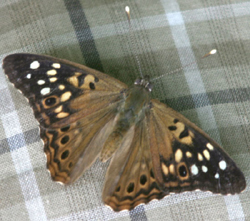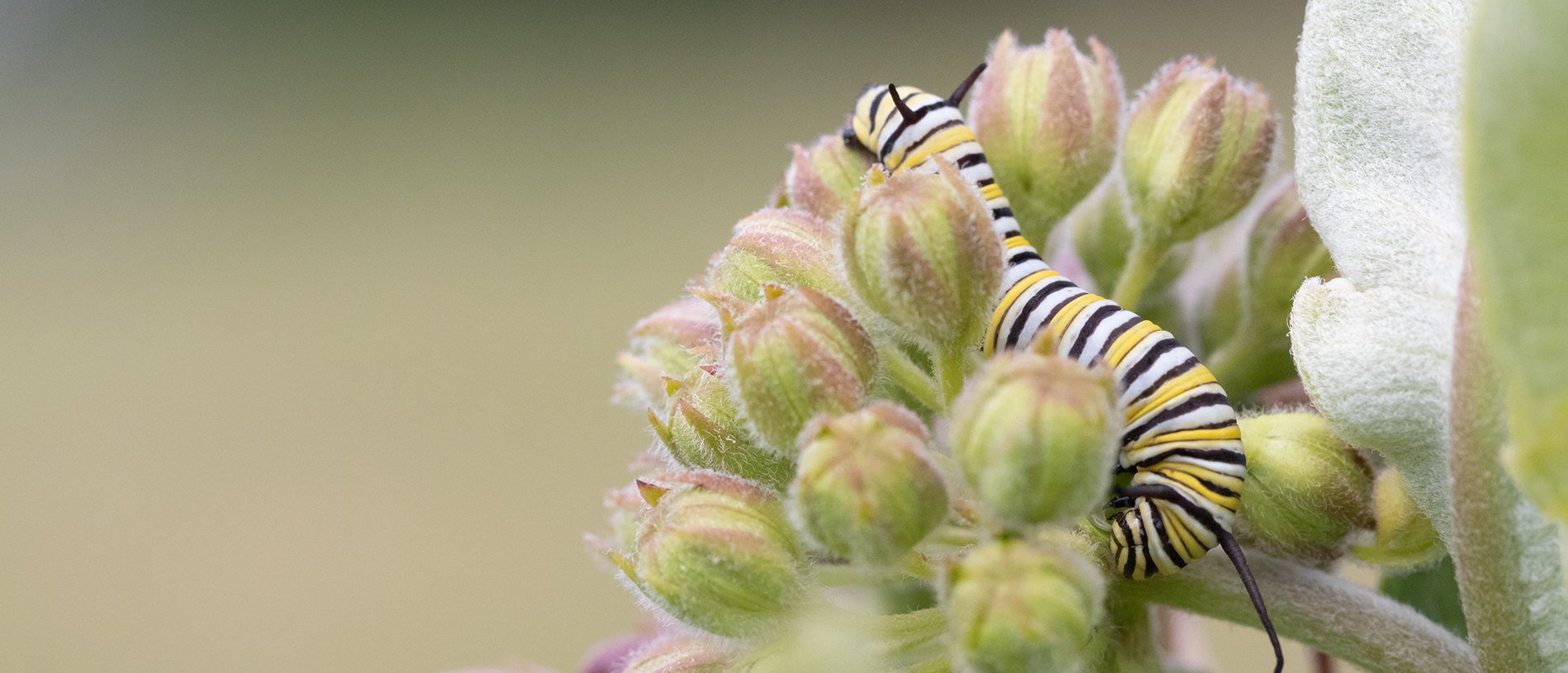Find a Butterfly
Hackberry Emperor
Asterocampa celtis
Named
Boisduval and Leconte, 1834

Taxonomy & Nomenclature
Also commonly known as the Hackberry Butterfly.
Identification
Wingspan: 2 2 1/2". Emperors may be distinguished from satyrids and anglewings by their more triangular wings and by the complex pattern of spotting on their forewings. The present species is told from the similar Tawny Emperor by the presence of a single eyespot near the outer edge of the forewing (lacking in the Tawny Emperor), and brown to gray brown coloration (much tawnier, as the name implies, in the Tawny Emperor). Males of both species have narrower, darker, and more pointed forewings than the females.
Distribution
North Dakota east through the Great Lakes states to southern New England, and south to Arizona, New Mexico, Texas, and the Gulf States, including Florida. Also, northern Mexico. In New England, the Hackberry Emperor is confined to western Connecticut and southwestern Massachusetts.
Status in Massachusetts
Extremely local resident in the lower Connecticut River valley and elsewhere in western Massachusetts. A colony of undetermined size exists in Forest Park, Springfield; other records include two males in Carnegie Museum (S. W. Denton) dated 1894, from Massachusetts. One individual was seen on 16 July 1994, Ashley Falls (Berkshire Co.), E. Dunbar.

Flight Period in Massachusetts
June to August. Extreme dates: 22 July 1990, Springfield (Hampden Co.), R. Pease; 20 August 1995, Springfield (Hampden Co.), R. Pease; also, late August 1975, Springfield (Hampden Co.), Lep. News.
Larval Food Plants
Trees of the genus Celtis are utilized by all Asterocampa species. In Massachusetts, Hackberry (C. occidentalis) is eaten.
Adult Food sources
Rarely takes nectar; visits puddles, excrement, sap, and rotting fruit.

Habitat
Openings and edges of deciduous woodland and parks where the host plant, Hackberry, grows. Hackberry occurs at the northern extremity of its natural range in isolated pockets in southwestern Massachusetts, including on islands in the lower Connecticut River. Searching Hackberry stands, no matter how small, at the proper time of year, may lead to the discovery of additional populations of both emperor species in the Commonwealth.
Life Cycle
EGG: dome shaped, with prominent vertical ribs and fine horizontal lines. OVIPOSITION: Eggs laid singly or in small groups, usually on the underside of host plant leaves. LARVA: Bright green, with lengthwise yellow stripes and forked projections at both ends. CHRYSALIS: Bluish green, sharply horned and keeled. OVERWINTERING STAGE: Overwintering third instar larvae emerge from the leaf litter in mid May (pers. comm. Roger Pease). The larvae, which turned brown the previous winter prior to hibernation, once again become green as the caterpillars resume feeding in the Hackberry trees. We have no definite data on brood emergences in Massachusetts. Adults fly in June. A portion of the first brood larvae and all second brood larvae suspend feeding when half grown and overwinter in leaf litter at the base of Hackberries.
Adults, especially males, will fly from their tree trunk perches at passing objects, including humans. There are many accounts of this species landing on people. One of the authors, passing through a Hackberry grove in South Carolina, was encircled by an animated swarm of Hackberry Emperors, numbering over fifty individuals, and several came to rest on his clothing. Adults spend a significant portion of their lives flying in the upper foliage of Hackberries and nearby trees, and may go unnoticed because of this.
Account Author
Roger Pease



